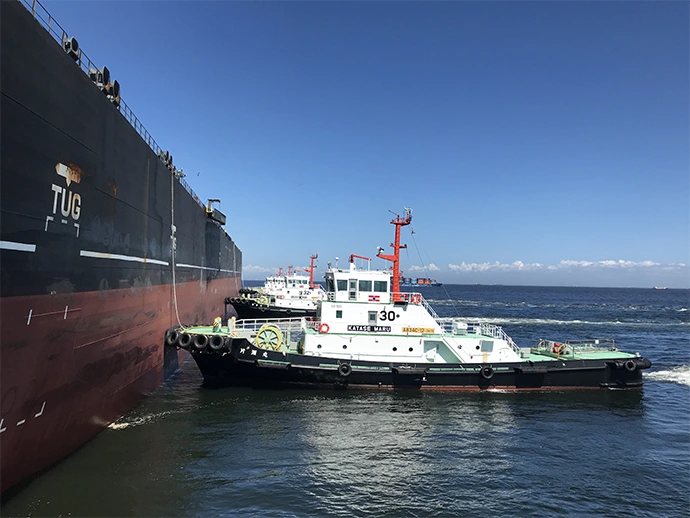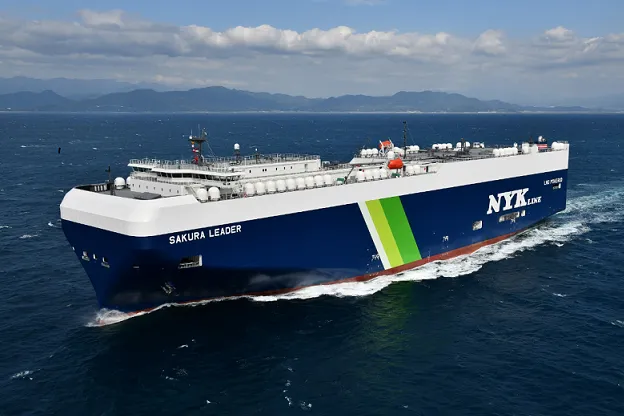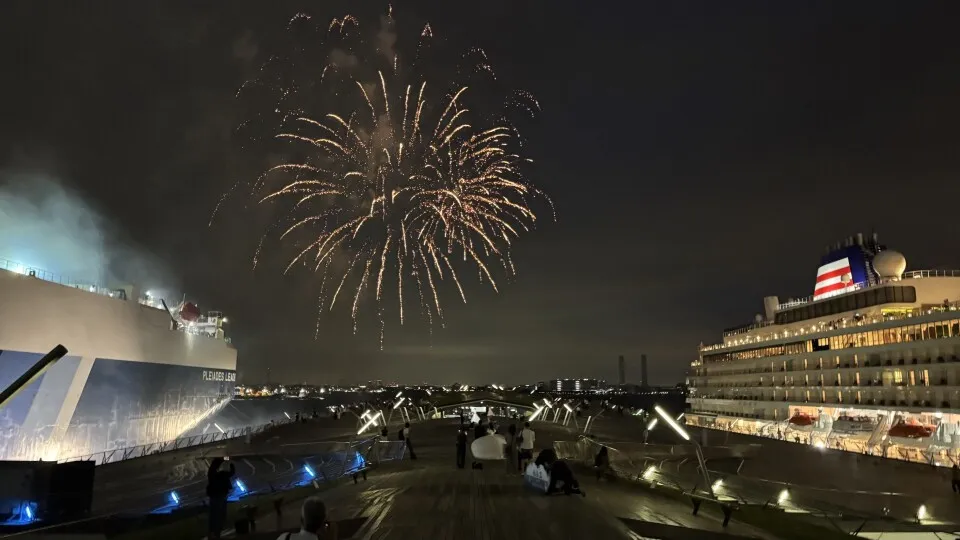NYK Collection: Tugboats — The Mighty Power of Small Vessels
Released : Sep. 05, 2025
Updated : Oct. 20, 2025
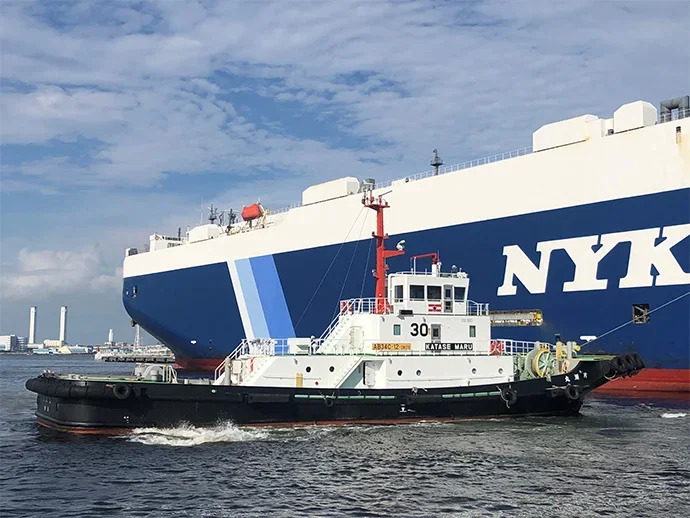
“Bringing value to life.” ── This corporate philosophy of NYK Line is embodied by the many types of vessels that traverse the oceans daily, delivering value across the seas. In this series, “NYK Collection,” we’ll take a closer, more accessible look at the various vessel types that sustain people’s lives and the global economy.
Tugboats: The Unsung Heroes of Ports
Tugboats may not be household names, but if you’ve ever visited a port, you’ve almost certainly seen these indispensable vessels at work.
Their primary mission is to assist large ships — vessels that can stretch 300 to 400 meters in length — in safely entering, exiting, and docking at ports.
Given the immense size of some ships, precise maneuvering within ports is challenging, and docking under their own power can be difficult. Despite a tugboat’s modest 20–40 meter length, it can provide crucial support by pushing and pulling these massive ships to ensure their safe navigation and docking.
How Do Tugboats Work?
Tugboats use ropes to tow (tug) large ships or push them from the bow. Typically, a team of two to five tugboats works together to guide a single large ship. This dynamic teamwork enables precise lateral shifts and reversals that are key to safely guiding the massive ships.
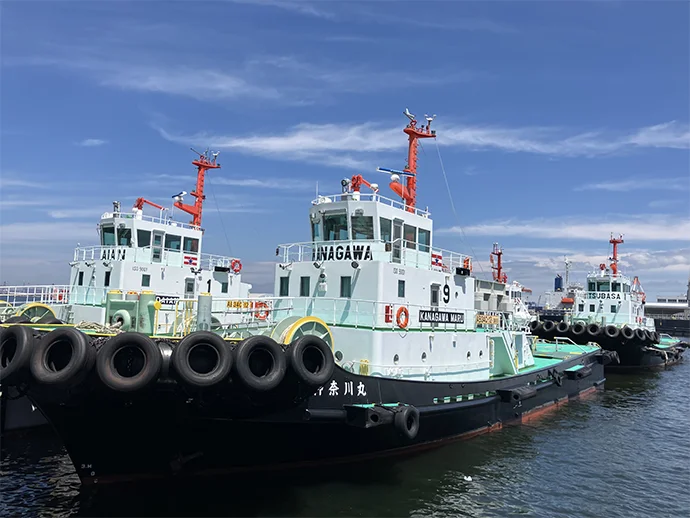
Tugboats operate in major ports across Japan
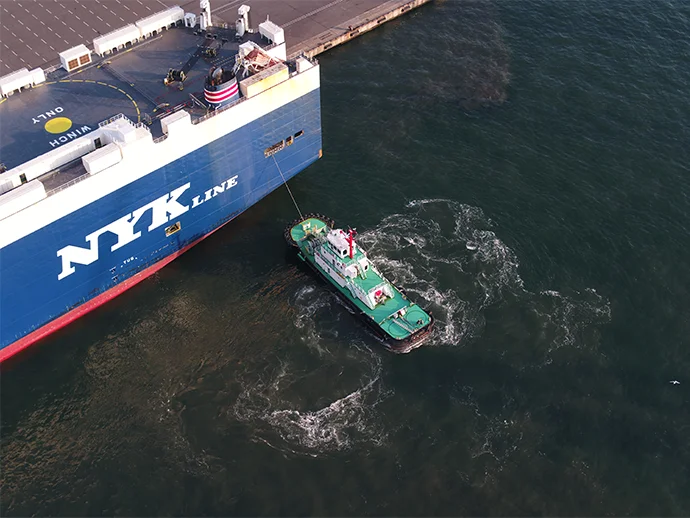
A tugboat assisting a car carrier
What is a Tugboat?
Moving massive ships requires an extraordinary amount of power. Despite their small size, tugboats are powerful. Equipped with engines producing 3,600 – 5,000 horsepower, tugboats can produce an output that is astonishing compared to their modest 200-ton hulls.Tugboats can generate the force needed to move large ships and maintain the speed required to keep up with them.
In addition to their impressive power, tugboats have several unique features that make them indispensable:
- Azimuth Thrusters
Propellers that can rotate 360 degrees horizontally. This allows the tugboat to turn on the spot or move sideways with exceptional maneuverability.
- Tug Lines
The durable ropes connecting tugboats to large ships must withstand tremendous forces — sometimes exceeding 50 tons. These high-quality, robust ropes are meticulously maintained and monitored to ensure safety.
- Giant Tires
Mounted around tugboat bows, these oversized tires act as shock-absorbing fenders. They serve to protect the tugboat and the large ship when the tugboat pushes the ship to adjust its position. The NYK Group’s tugboats repurpose old tires from jumbo jets and heavy machinery.
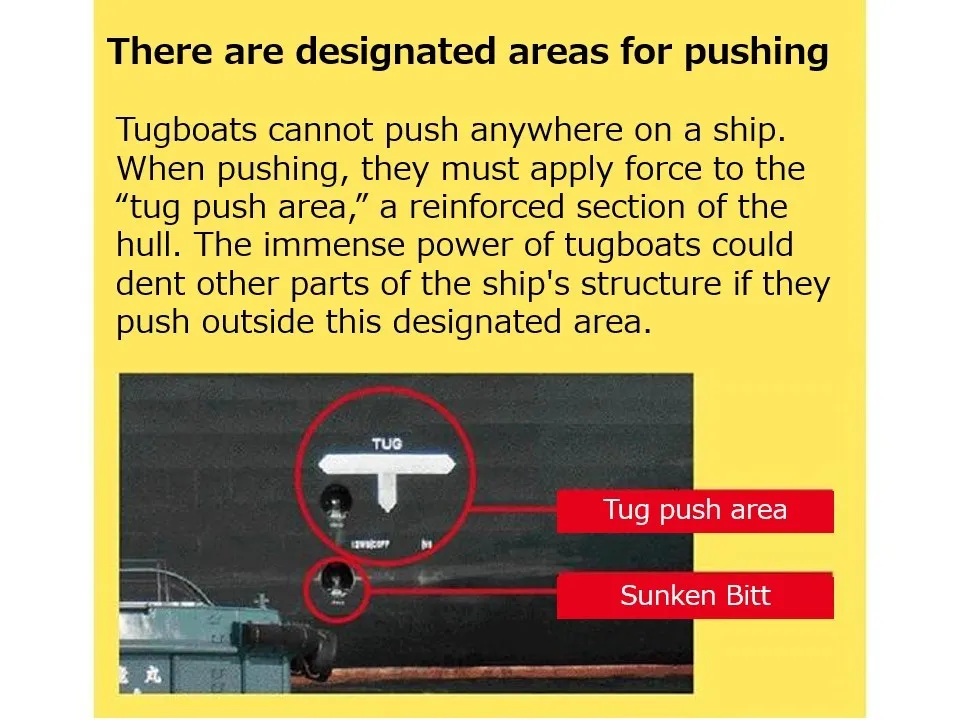
Some tugboats are also equipped with firefighting water nozzles, allowing them to respond quickly to ship fires, even before dedicated fireboats arrive on the scene.
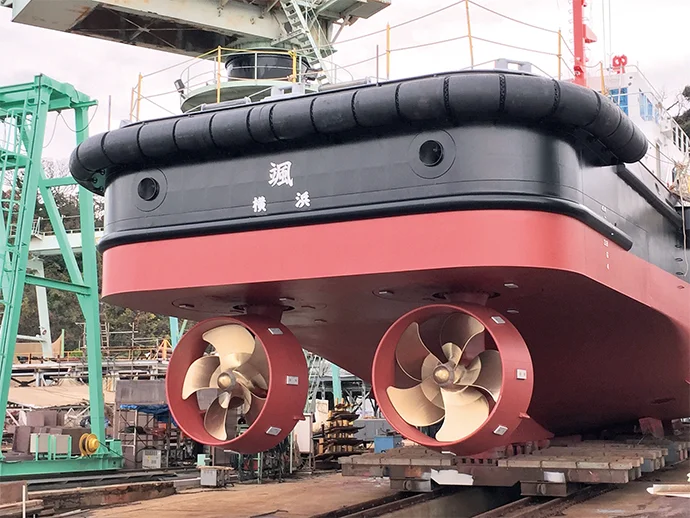
Enhanced maneuverability with 360-degree rotating azimuth thrusters
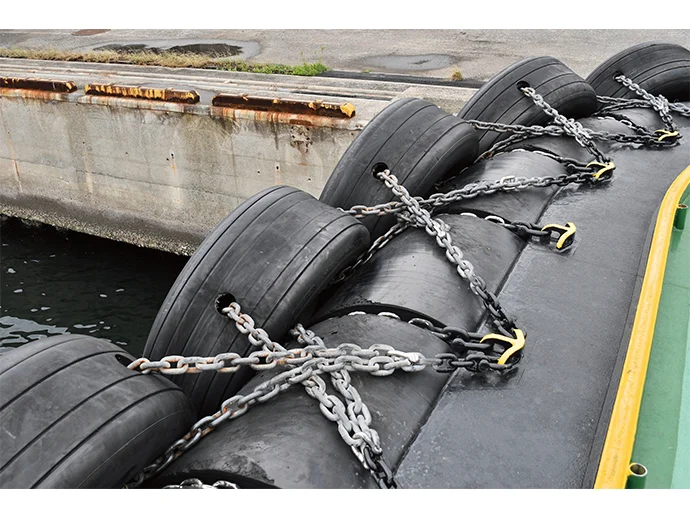
Giant tires acting as shock absorbers
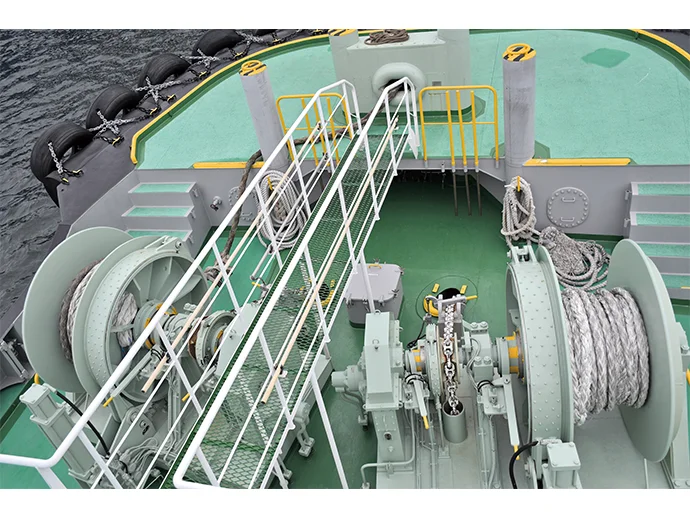
Tug line installed at the bow
The Versatile Roles of Tugboats
When a large ship enters or leaves a port, a harbor pilot first boards the ship to guide it. Working in coordination with the tugboats, the pilot directs the tugboat crews to attach tug lines to the ship. The tugboats then tow, or “tug,” the ship. Tugboats may also slow a ship by pulling from the stern. But tugging alone isn’t enough to provide smooth support. Sometimes a push is needed.
For example, if a tugboat pushes the port side of the bow while another pushes the starboard side of the stern, the large ship can rotate to the right. This maneuver is called a “push.” Multiple tugboats can also push from one side to move the ship laterally toward the quay. Watching these highly skilled techniques in action is truly impressive! Tugboats combine tugging and pushing to navigate the ship effectively, sometimes pulling at an angle while pushing simultaneously.
In addition to these duties, tugboats play other critical roles, such as suppressing fires, monitoring port safety, ensuring clear navigation routes, and checking weather conditions. For instance, when a crude oil tanker arrives, tugboats are on standby nearby 24 hours a day to respond immediately to emergencies. They are essential for maintaining port safety.
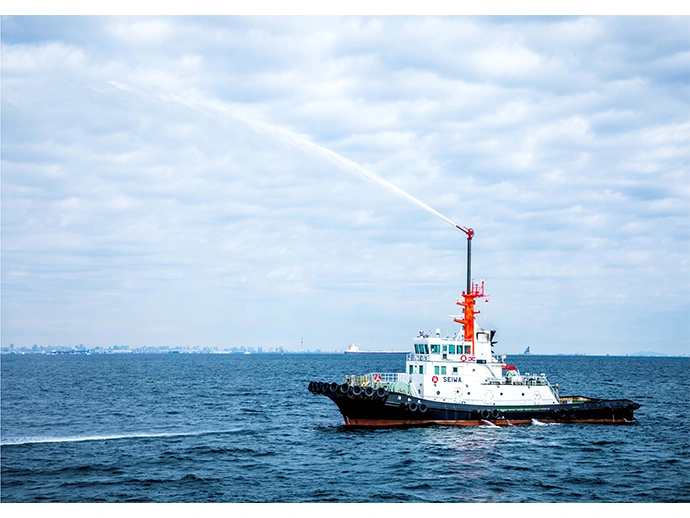
Firefighting water nozzles
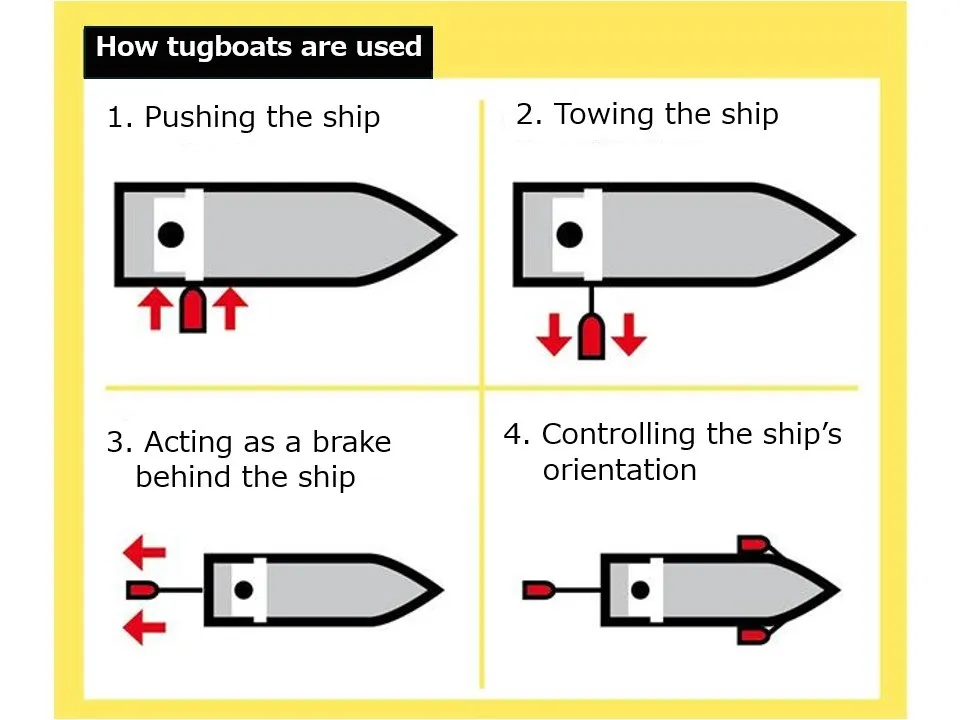
The small red vessel, the tugboat, easily pushes and pulls large ships.
Spotlight on the Ever-Evolving Tugboats of the NYK Group!
Since the advent of large steamships, tugboats have been indispensable in major ports worldwide. In Japan, tugboats have been in use since the opening of Yokohama port, with the first tugboat introduced in 1866 at the end of the Edo period. At that time, the Tokugawa shogunate commissioned a wooden vessel with a 10-horsepower engine at the Yokohama Iron Works.
In those days, a tugboat’s primary role was, as their name suggests, to “tug” ships with ropes.
As technology advanced, from steam engines to diesel engines and propeller systems, tugboats became more controllable and versatile. With increased performance, their roles expanded significantly to include the pushing and lateral movements described earlier.
Today, tugboats continue to evolve.
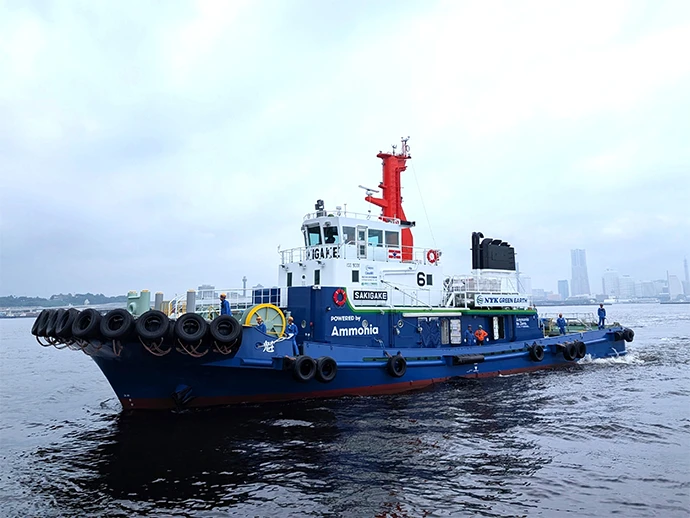
One area of focus is the development of environmentally friendly tugboats. In 2015, the NYK Group launched Sakigake, Japan’s first LNG-fueled tugboat. This vessel was later modified to use ammonia fuel, a carbon-free fuel. Following successful operational tests, the ammonia-fueled tugboat entered service in 2025 under our subsidiary Shin-Nippon Kaiyosha. The NYK Group also aims to launch an all-electric tugboat by the end of 2026.
Despite their compact size, tugboats pack a powerful punch. They deploy highly advanced features to perform their vital roles with precision. If you visit Japan’s major ports, you’re likely to see them in action. Watching their nimble movements, you can’t help but admire the crew’s advanced skills and the tugboats’ impressive capabilities. The deep draft (the part of the hull submerged in water) relative to the size of the tugboat reflects the sheer power of its engine! You might even want to cheer them on!
